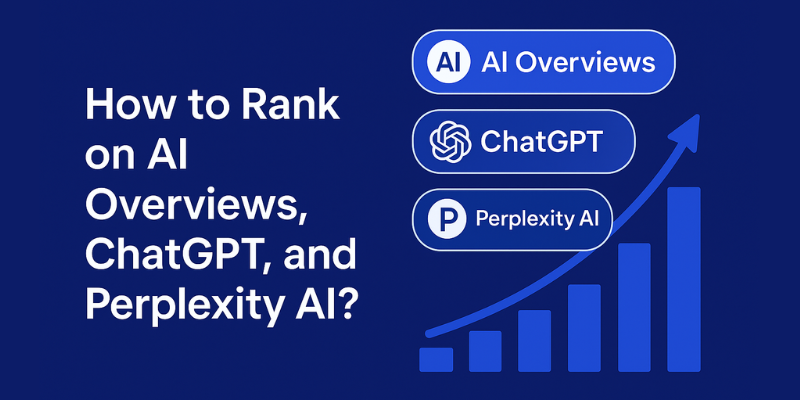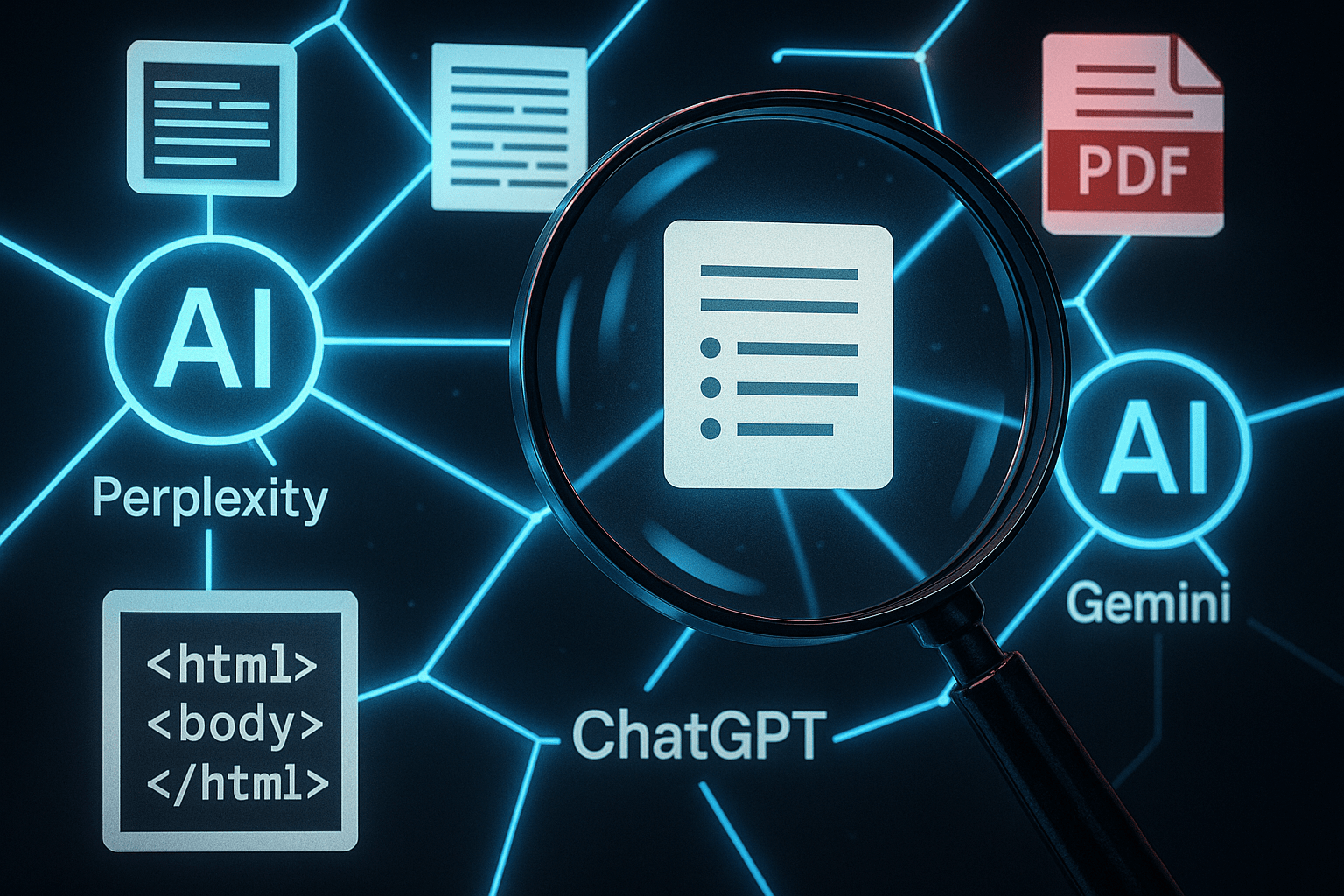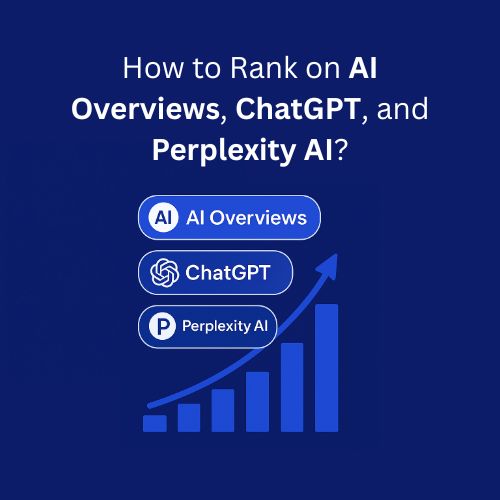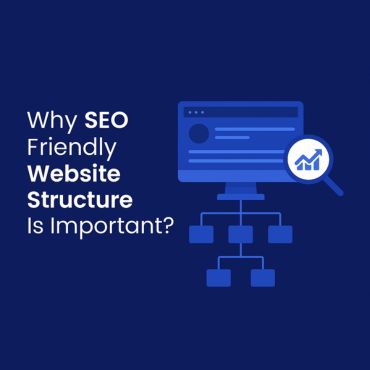
Table of Content
- Introduction to Answer Engine Optimisation (AEO)
- What Are AI Overviews?
- How ChatGPT and Perplexity AI Source Information
- Core Ranking Signals for AI Answer Engines
- Optimizing Your Content for ChatGPT
- Optimizing Your Content for Perplexity AI
- Technical Foundations & Crawlability
- Measuring Your AEO Performance
- Real-World Examples & Mini Case Studies
- Looking Ahead: The Future of AEO
- FAQs
The search landscape is undergoing a seismic shift. For years, SEO professionals have meticulously optimised for Google’s traditional “10 blue links.” But with the rise of AI-powered answer engines, a new change has emerged: Answer Engine optimisation (AEO).
If you’re wondering how to rank on AI search platforms, this guide is for you. We’re moving beyond mere keywords and backlinks into a realm where clarity, authority, and direct answers reign supreme.
Introduction to Answer Engine Optimisation (AEO)

Forget everything you thought you knew about “search.” While traditional SEO still holds weight, AI Overviews, ChatGPT, and Perplexity AI represent a fundamental re-imagining of how users find information. These aren’t just search engines; they’re answer engines.
AEO is the discipline of optimizing your content to be the preferred source for these AI models. It’s about crafting content that isn’t just found, but understood and synthesized into direct, authoritative answers. The goal? To ensure your brand is cited, quoted, and presented as the definitive authority.
What Are AI Overviews?
AI Overviews (formerly known as Search Generative Experience or SGE) are Google’s foray into generative AI within its core search results. Instead of just a list of links, Google now provides a concise, AI-generated summary at the top of the SERP, directly answering the user’s query.
“AI Overviews currently appear in 47% of Google search results, fundamentally changing how users interact with search” – Botify’s AI Overviews Study
These overviews pull information from various sources across the web, often citing them directly. For content creators, the objective is no longer just to rank #1 in the traditional sense, but to be the source that Google’s AI chooses to feature in its summary. This is a critical component of how to rank on AI overview.
How ChatGPT and Perplexity AI Source Information

Understanding the mechanics behind these AI models is crucial for effective AEO.
- ChatGPT (and other Large Language Models – LLMs): These are primarily trained on vast datasets of text and code, representing a snapshot of the internet up to their last training cut-off. Originally, they didn’t “browse the live web” in real-time, generating responses solely from their pre-existing knowledge.
However, AI tools now have integrated web Browse capabilities. When you ask a question requiring current information or specific details not in their pre-trained data, these AI models can:
- Formulate and execute search queries.
- Analyze search results from the live web.
- Synthesize and summarize the gathered information into their responses, often with source citations.
The key to influencing these AI tools remains similar: become an undeniable authority. Your content needs to be highly authoritative, frequently cited, and widely distributed across the web. Whether through pre-training data or live Browse, how to “rank” on ChatGPT and similar AI is indirect: ensure your content is credible, discoverable, and recognized as a primary source by search engines and the wider internet.
- Perplexity AI: Perplexity operates differently. It functions more like a research assistant, actively searching the web in real-time to answer queries. Crucially, Perplexity provides citations for its answers, linking directly to the sources it used. This makes it a more transparent answer engine. For Perplexity, the goal is to be a primary, citable source that offers clear, concise, and factually accurate information. This direct citation model offers a clearer path for how to rank on Perplexity.
Core Ranking Signals for AI Answer Engines

While the algorithms are complex and proprietary, several core signals likely influence how AI models select and synthesize information:
- Authority & Trustworthiness: AI models prioritize information from reputable, expert sources. This means strong domain authority, E-E-A-T (Experience, Expertise, Authoritativeness, Trustworthiness) signals, and a history of accurate, well-researched content.
- Relevance & Specificity: Content must directly and precisely answer the user’s query. General overviews may not suffice; AI models seek specific facts, definitions, and step-by-step instructions.
- Comprehensiveness & Depth: While conciseness is key for the answer, the underlying content should be comprehensive, covering all facets of a topic without unnecessary fluff.
- Clarity & Readability: AI models process natural language. Clear, simple sentence structures, logical flow, and well-organized content are paramount. Avoid jargon where possible.
- Recency & Freshness: For rapidly evolving topics, up-to-date information is critical. AI models are less likely to cite outdated content.
- Structured Data & Semantic Markup: While not a direct “ranking factor” in the traditional sense, structured data (Schema.org) helps AI models understand the context and relationships within your content, making it easier for them to extract specific answers.
Optimizing Your Content for ChatGPT
Optimizing for LLMs like ChatGPT is about making your content highly digestible and authoritative.
- Focus on Definitive Answers: Structure your content to provide direct, unambiguous answers to common questions within your niche. Use clear headings and subheadings that pose questions and then immediately answer them.
- Conciseness & Precision: AI models value brevity. Get to the point quickly. While comprehensive, avoid verbose language. Think “Wikipedia entry” meets “expert explanation.”
- Fact-Based Content: Every claim should be verifiable. While ChatGPT doesn’t cite sources, its training data is built on factual information.
- Use Lists and Tables: These formats are excellent for presenting structured information that AI models can easily parse and synthesize.
- Internal Linking: A robust internal linking structure helps AI models understand the depth and breadth of your expertise on a topic, reinforcing your authority.
- Become the “Go-To” Source: The more your content is cited, linked to, and referenced across the web, the more likely it is to be included in future LLM training datasets. This is the long-game strategy for how to rank on ChatGPT.
Optimizing Your Content for Perplexity AI
Perplexity AI’s citation model offers a more direct optimisation path.
- Answer-First Content: Design your content to directly answer specific questions. Imagine a user typing a question into Perplexity; your page should be the most straightforward, authoritative answer.
- Clear, Attributable Facts: Perplexity thrives on factual accuracy and clear attribution. Ensure your data points, statistics, and claims are well-supported.
- Strong Introductions & Summaries: Perplexity often pulls snippets from the beginning of sections or well-summarized conclusions. Make your key points immediately apparent.
- Use Subheadings as Questions: Just like with ChatGPT, using questions as subheadings (e.g., “What is AEO?”) followed by direct answers is highly effective.
- Authoritative Sources & Outbound Links: While Perplexity finds its own sources, demonstrating your own research and linking to other high-authority sites can indirectly signal quality.
- Unique Insights & Original Research: If you have unique data or original insights, present them clearly. Perplexity is looking for novel, valuable information. This is key to how to rank on Perplexity and be the cited source.
Technical Foundations & Crawlability
Even the smartest AI can’t process what it can’t access or understand. Strong technical SEO is the bedrock of AEO.
- Schema Markup: Implement relevant Schema.org markup (e.g., Question, Answer, Article, FactCheck, HowTo). This explicitly tells AI models what your content is about and helps them extract specific data points.
- Site Speed & Core Web Vitals: A fast, responsive website provides a better user experience and signals quality to crawlers, including those used by AI.
- Mobile-Friendliness: With a mobile-first indexing approach, your site must be optimised for mobile devices.
- Clean Code & Accessibility: Well-structured HTML, semantic tags, and accessible design principles make it easier for AI to parse and interpret your content.
- XML Sitemaps & Robots.txt: Ensure your sitemaps are up-to-date and your robots.txt file isn’t blocking important content from being crawled.
- HTTPS: A secure website is a fundamental trust signal for both users and AI.
Measuring Your AEO Performance
Measuring AEO is a nascent field, but here’s what to look for:
- AI Overview Impressions & Clicks: Monitor your Google Search Console for “AI Overview” or “SGE” related impressions and clicks (as these metrics become available).
- Direct Citations: For Perplexity AI, regularly search for your brand or key topics and see if your content is being cited in its answers.
- Brand Mentions: Track overall brand mentions across the web, especially in contexts related to your expertise. More mentions signal broader authority.
- Traffic from AI-Driven Platforms (if identifiable): While direct attribution can be challenging, look for unusual traffic patterns that might correlate with AI feature prominence.
- Featured Snippets & People Also Ask (PAA): While not directly AI Overviews, success in these traditional SERP features often indicates content that is well-structured for AI consumption.
Real-World Examples & Mini Case Studies
Consider a financial blog that wants to rank for “what is compound interest?”
- Traditional SEO: Might focus on high-volume keywords, long-form content.
- AEO Approach: A concise, clear definition of compound interest in the first paragraph, followed by a simple example. Schema markup for Question and Answer. The article would meticulously explain the formula, provide a detailed, step-by-step example, and cite the source of the formula (e.g., a financial textbook or academic paper), making it a prime candidate for direct citation.
Another example: A medical site explaining “symptoms of the flu.” - AEO Approach: A clear, bulleted list of common symptoms at the top, followed by detailed explanations. The content would be written by a verified medical professional (E-E-A-T), and the page would include MedicalCondition schema. This structure makes it easy for AI Overviews to pull a concise answer, and for Perplexity to cite an authoritative source.
Looking Ahead: The Future of AEO
AEO is not a passing fad; it’s the future of information retrieval. As AI models become more sophisticated and integrated into our daily lives, the ability to optimize for them will become as critical as traditional SEO is today.
The lines between search, content, and AI will continue to blur. Content creators who embrace clarity, authority, and direct answers will be best positioned to thrive in this evolving landscape. Start optimizing for how to rank on AI search now, and prepare for a future where your content speaks directly to the machines that power our answers.
Ready to dominate the new era of AI search? Partner with AONE SEO Service, the Best SEO Company in India, to optimize your content for AI Contact us today for a consultation!
FAQs
What is Answer Engine Optimisation (AEO) and how does it differ from traditional SEO?
AEO is the practice of optimizing content specifically for AI-powered answer engines like Google’s AI Overviews, Gemini, ChatGPT, and Perplexity AI. While traditional SEO focuses on ranking on search result pages, AEO aims to have your content directly cited, summarized, or featured as the definitive answer by AI models, emphasizing clarity, authority, and direct answers.
How do AI Overviews, ChatGPT, and Perplexity AI source their information differently?
Gemini, ChatGPT, Perplexity AI, and AI Overviews synthesize real-time web content, often citing sources directly.
Is technical SEO still important for AEO?
Absolutely. Strong technical foundations are crucial. AI models rely on well-structured, crawlable, and accessible websites to effectively understand and extract information. Elements like Schema markup, site speed, mobile-friendliness, and clean code directly contribute to your content’s ability to be processed and utilized by AI answer engines.
Will AI Overviews and answer engines reduce traffic to my website?
The impact on website traffic is a key concern. While AI Overviews and direct answers may satisfy some queries directly on the search results page, potentially reducing clicks for informational queries, they also offer new opportunities for visibility and brand exposure. Being cited as a source by AI can significantly boost your authority and introduce your brand to new audiences. The goal is to become the trusted source that AI points to, maintaining your brand’s prominence even if direct clicks shift for certain query types.






